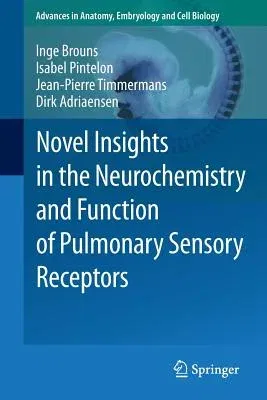Inge Brouns
(Author)Novel Insights in the Neurochemistry and Function of Pulmonary Sensory Receptors (2012)Paperback - 2012, 6 October 2011

Qty
1
Turbo
Ships in 2 - 3 days
In Stock
Free Delivery
Cash on Delivery
15 Days
Free Returns
Secure Checkout

Part of Series
Advances in Anatomy, Embryology and Cell Biology
Print Length
118 pages
Language
English
Publisher
Springer
Date Published
6 Oct 2011
ISBN-10
3642227716
ISBN-13
9783642227714
Description
Product Details
Book Edition:
2012
Book Format:
Paperback
Country of Origin:
NL
Date Published:
6 October 2011
Dimensions:
23.44 x
15.67 x
0.74 cm
Genre:
Science/Technology Aspects
ISBN-10:
3642227716
ISBN-13:
9783642227714
Language:
English
Location:
Berlin, Heidelberg
Pages:
118
Publisher:
Weight:
149.69 gm